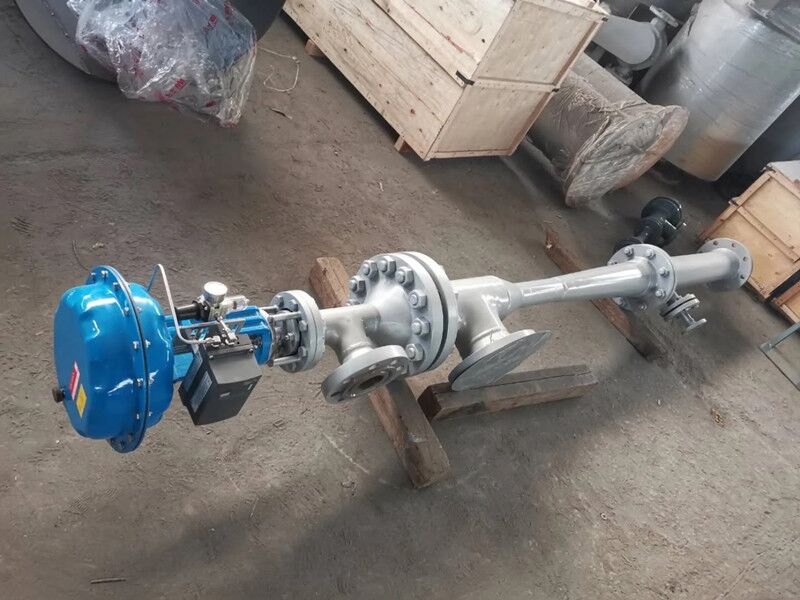Steam jet thermocompressor
Product Details
Steam jet compressor is steam driven ejector to improve pressure and temperature of low pressure steam or flash steam.
Working principle:
When high pressure motive steam enters ejector at a high velocity, it forms a jet flow, which will result in low pressure at suction area. Low pressure steam is drawn inside and mixed with high pressure steam. Vapor compression is achieved thermally. Mixed steam will regain some pressure loss at diffuser. Finally, mixed steam will meet the pressure & temperature required by process flow.
Application:
1. Recovery of flash steam from heat exchanger or power plant deaerator, flash tank. In industries like chemical, fertilizer, pharmaceutical, waste treatment, multiple effect evaporation is used. Flash steam vaporized from solution could be recovered by steam jet compressor to save steam consumption.
2. Recovery of exhaust steam. Exhaust steam from equipment powered by steam can’t be used due to low pressure. With steam jet compressor, exhaust steam could be recycled. Pressure & temperature of exhaust steam will be increased, so it could be used again.
3. Boosting low pressure steam. For some enterprises, steam of different pressure is used for production. If heat source can’t supply all the pressure, steam ejector heat pump could boot low pressure steam to meet with requirement. Let’s take an example. Two effect falling film evaporator is used to produce concentrated milk in diary industry. Low pressure vapor from second effect evaporator could be compressed by high pressure motive steam, and then used for first effect evaporator.
Features:
1. High efficiency, low operation cost.
2. Simple structure, no mechanical moving parts. Reliable operation, long service life.
3. Compact structure, easy installation.
4. Automatic adjustment device could ensure stable pressure at outlet.
Steam jet thermocompressor (or known as steam jet compressor, vapour compressor) is an ejector widely used in industries like power plant, oil & gas, chemical, sugar, paper making for low pressure steam recovery. Steam jet thermocompressor could boost steam pressure by mixing high pressure steam with low pressure steam.
Application:
1. Matching a given pressure for steam turbine.
2. Heating system.
3. Pressure reducing & desuperheating station.
4. Flash steam recovery from heat exchanger, deaerator, flash tank, etc.
5. ……
Working principle:
Steam jet thermocompressor consists of motive steam nozzle, suction chamber, mixing chamber and diffuser. High pressure steam (motive steam) goes through nozzle at a high velocity to form jet injection. Pressure difference is formed between high pressure steam and low pressure steam (suction steam). LP steam is drawn into thermocompressor. After mixing & diffusion, the mixture comes out as intermediate pressure steam.
According to the flow rate variation, we can design single nozzle or multiple nozzle structure to adjust the steam flow. Steam jet thermocompressor could work at a high efficiency when steam flow changes.
Entrainment ratio stands for the capacity of thermocompressor. It is a ratio between HP & LP steam flow.
Case:
As a response to national energy policy, many electricity generation power plants need to change their steam condenser into heating unit to improve energy utilization ratio.
In 2010, one power plant of Datang Corporation made some changes to their #4 and #5 unit (2×300MW). Low pressure steam is drawn from medium & low pressure cylinder of turbine and used as suction steam, high pressure steam is drawn from high pressure cylinder of turbine and used as motive steam. Thermocompressor boost steam pressure from 0.7~0.8Mpa to 1.0~1.2Mpa. Then the steam is used as heat source for district heating network, which could cover 6 million square meters.
